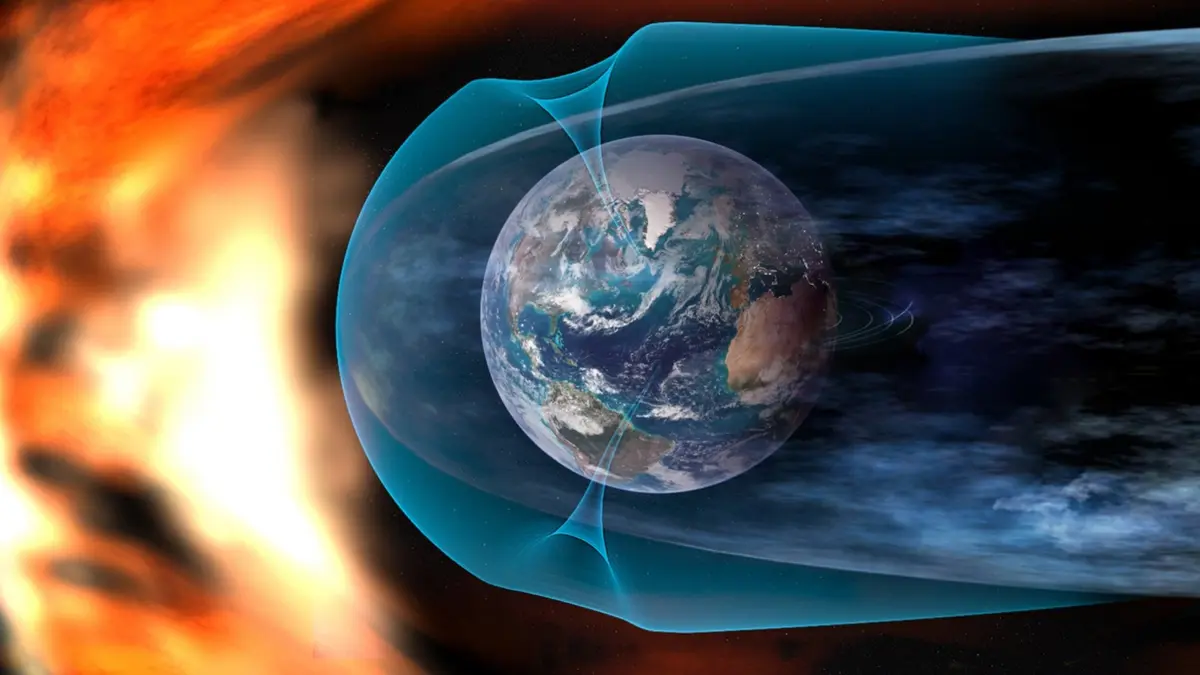About 41,000 years ago the Earth experienced a big change in its magnetic field. This change is called the Laschamps event. The Earth’s magnetic field is like a shield protecting it from harmful space radiation. But sometimes, this shield becomes weaker.

During the Laschamps event, the Earth’s magnetic field weakened a lot. It even flipped, so the north and south poles swapped places. When this happened the Earth’s magnetic field couldn’t block out as much cosmic radiation from space. This exposed the Earth to dangerous cosmic rays and particles from the Sun.
Scientists studied evidence from ice and sediment cores to learn more about the Laschamps event. They looked at special atoms called cosmogenic radionuclides, which form when cosmic rays interact with the Earth’s atmosphere.
By studying these atoms, scientists can understand how much cosmic radiation hit the Earth during the Laschamps event. One important atom they studied is beryllium-10, which can tell us about changes in the Earth’s magnetic field.
During the Laschamps event, the Earth’s magnetic field was much weaker than it is now. This allowed a lot more cosmic rays to reach the Earth’s surface. Understanding events like the Laschamps event is important for predicting space weather and its effects on our planet. This research will be presented at a scientific conference in Vienna, Austria, by Sanja Panovska from GFZ Potsdam.
Leave a Reply